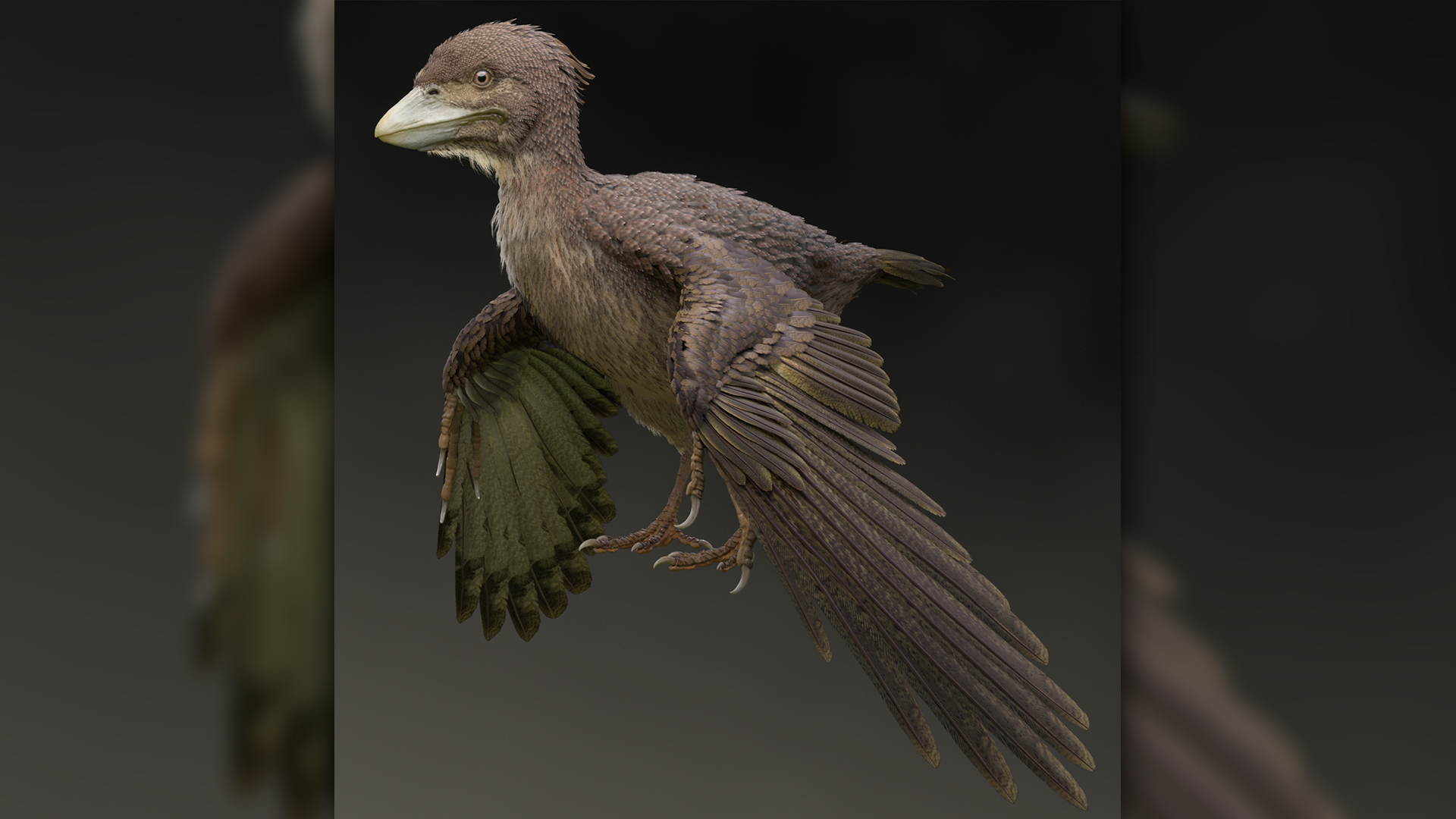Dinosaur-Era Bird Preserved in 3D Could Rewrite History of Flight
The fossil dates to 120 million years ago.

Around 120 million years ago, a bird about the size of a pigeon fluttered through Cretaceous forests in what is now Japan. The newly discovered fossil, preserved in three dimensions, is the first primitive Cretaceous bird found outside China. And it may force scientists to rethink some details in the evolution of flight.
The ancient avian, named Fukuipteryx prima, displays something found in modern birds that is absent in other early Cretaceous bird fossils: a bony plate near the tail.
Known as a pygostyle, this triangular structure supports tail feathers and has been linked to the evolution of shorter tails for flying. But researchers now suspect that even though this plate emerged as tails became smaller, it isn't necessarily a flight adaptation, according to a new study.
Related: Images: Dinosaurs That Learned to Fly
Scientists found the partial skeleton of the bird in Kitadani Dinosaur Quarry, a Lower Cretaceous formation near the city of Katsuyama in central Japan.
What distinguishes birds such as Fukuipteryx from their nonavian dinosaur cousins? They have forelimbs longer than their hind limbs, unfused shoulder bones and a shortened tail with a pygostyle, said lead study author Takuya Imai, an assistant professor with the Dinosaur Research Institute at Fukui Prefectural University in Fukui, Japan.
Though some nonavian dinosaurs may have one of these features, only birds have all three, Imai told Live Science in an email.
Sign up for the Live Science daily newsletter now
Get the world’s most fascinating discoveries delivered straight to your inbox.
Like Archaeopteryx — the oldest known bird, dating to 160 million to 140 million years ago — Fukuipteryx had an unfused pelvis and a U-shaped wishbone: hallmarks of primitive birds. Other intact bones in the fossil included ribs, vertebrae and limb bones, as well as the pygostyle, which was "long, robust and rod-shaped" and ended with "a paddle-like structure," the researchers reported.
In some aspects, Fukuipteryx's pygostyle shape resembled that of a domestic chicken, the scientists wrote.
Previously, it was thought that birds' tails shortened as the animals adapted to flight. But Fukuipteryx is a more primitive bird than the last of the long-tailed flyers, a genus called Jeholornis that lived in China around 122 million to 120 million years ago, Imai said. This suggests that the loss of long tails, and the appearance of the pygostyle, may not be linked to flight.
"We still need more evidence to clarify this," he said.
Prior to this discovery, the only bird fossils from the early Cretaceous came from northeastern China, offering an incomplete view of how birds' distinctive adaptations emerged in the avian family tree, the study said.
"New findings from Japan and other regions in the world may completely change the picture again about what we think of the evolution of flight in the birds," Imai added.
The findings were published online today (Nov. 14) in the journal Communications Biology.
- In Photos: Amber Preserves Cretaceous Lizards
- Tiny Dino: Reconstructing Microraptor's Black Feathers
- Wipe Out: History's Most Mysterious Extinctions
Originally published on Live Science.


Mindy Weisberger is an editor at Scholastic and a former Live Science channel editor and senior writer. She has reported on general science, covering climate change, paleontology, biology and space. Mindy studied film at Columbia University; prior to Live Science she produced, wrote and directed media for the American Museum of Natural History in New York City. Her videos about dinosaurs, astrophysics, biodiversity and evolution appear in museums and science centers worldwide, earning awards such as the CINE Golden Eagle and the Communicator Award of Excellence. Her writing has also appeared in Scientific American, The Washington Post and How It Works Magazine. Her book "Rise of the Zombie Bugs: The Surprising Science of Parasitic Mind Control" will be published in spring 2025 by Johns Hopkins University Press.










